13 Mind-Blowing Reasons Your Parrot Acts Weird
Parrots display a wide range of intriguing behaviors that can seem puzzling to their human companions. From feather plucking to vocal mimicry, each action has unique reasons behind it. Understanding these behaviors helps create a harmonious environment and foster a strong bond with your feathered friend.
Feather Plucking
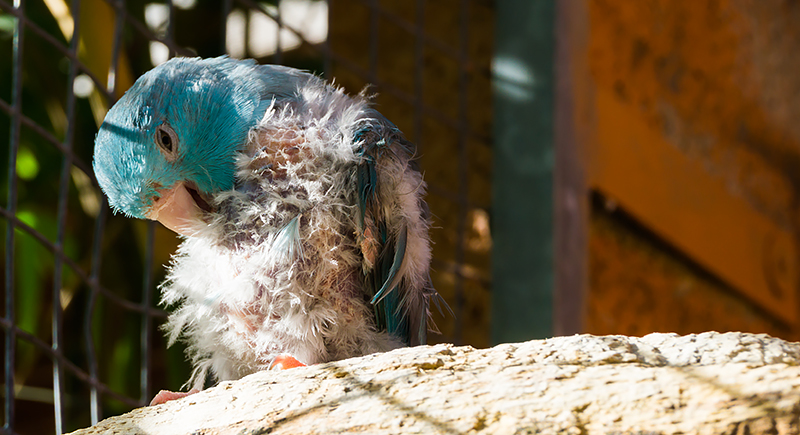
Credit: iStockphoto
Feather plucking in parrots can be quite perplexing! It’s a behavior that stems from stress, boredom, or underlying health issues. Their cognitive process triggers self-soothing actions, much like we bite nails. Parrots might also be seeking relief from skin irritation. Addressing their environment and health can help curb this unusual habit.
Excessive Screaming

Credit: flickr
The excessive screams by your parrots mean they’re seeking attention, expressing excitement, or experiencing boredom. This vocal behavior is part of their social nature. It can be contained by improving their environment with toys and interaction. With that, you can ensure your feathered friend stays content and engaged.
Aggression

Credit: flickr
Parrots show aggression because of fear, territoriality, or hormonal changes. It’s an act that will include biting or lunging. Understanding their triggers and providing a safe, stable environment helps manage aggression. You can address it by providing training and socialization activities. This will keep your parrot calm and friendly.
Regurgitating Food

Credit: flickr
The feathery friends often regurgitate food as a sign of affection, often towards their favorite person or toy. This behavior is a representation of their natural courtship rituals. While it may seem odd, it’s usually harmless, and the parrot is not sick. Ensure your parrot has ample interaction and stimulation to prevent unwanted regurgitation.
Head Bobbing

Credit: flickr
Head bobbing in parrots can show excitement, hunger, or a desire for attention. It’s often common in these birds, and they use it to communicate their needs or emotions. Observing the context of head bobbing will ensure you understand your parrot’s specific reasons, making you provide a better response.
Hanging Upside Down

Credit: flickr
Your parrot hanging upside down just means they are playing, exercising, or feeling secure. This acrobatic behavior is indicative of comfort and confidence in their surroundings. You could have provided a stimulating environment with perches and toys that encourages this natural, entertaining activity, keeping your parrot healthy and happy.
Wing Flapping
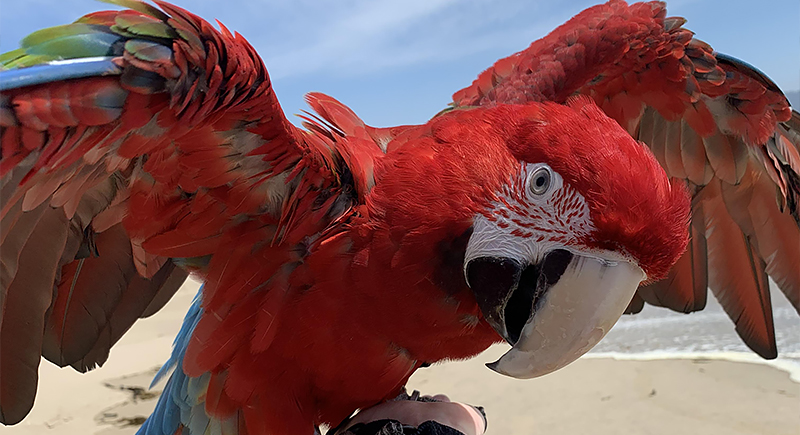
Credit: reddit
Wing flapping is a way for parrots to stretch, exercise, or express excitement. It shouldn’t worry you much. This vigorous activity helps them maintain muscle tone and overall health. All you need to do is ensure that your parrot has enough space and opportunities for movement.
Tail Wagging

Credit: Parrot Essentials
Tail-wagging in your parrot often signifies happiness, contentment, or excitement. This behavior is a positive indication of their emotional state, which means it should not raise an alarm. Regular interaction and a stimulating environment help maintain your parrot’s cheerful disposition, encouraging more tail-wagging moments.
Vocal Mimicry
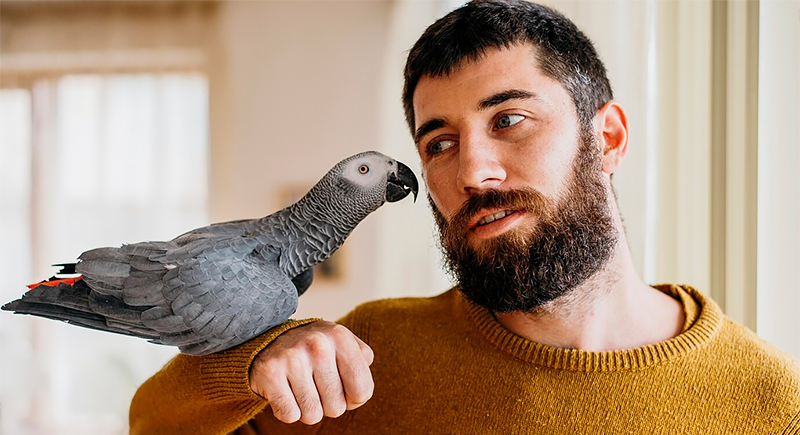
Credit: freepik
Parrots mimic sounds and words to communicate and bond with their human companions. This is the most popular parrot behavior, which is an impressive cognitive skill illustrating their intelligence and desire for interaction. Engaging with your parrot through speech and sounds stimulates their mind and fosters a strong connection.
Pacing
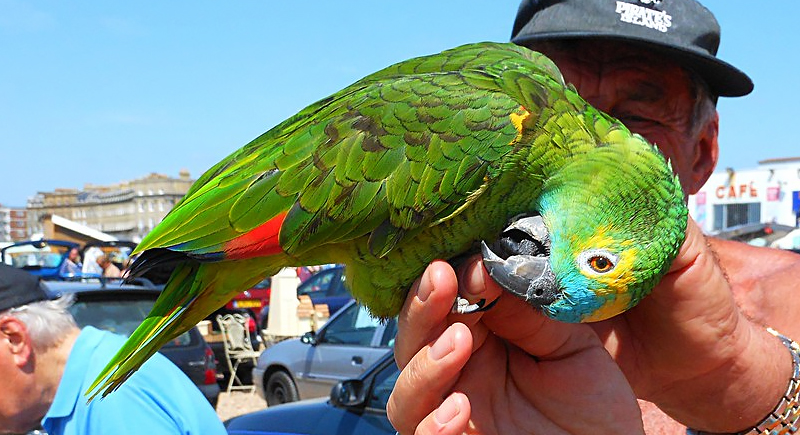
Credit: flickr
When you see your parrot pacing, it indicates they’re bored, anxious, or desire attention. This repetitive behavior highlights the need for mental and physical stimulation. Providing toys, social interaction, and an enriching environment helps alleviate pacing. Use these approaches to ensure your parrot stays content and engaged.
Eye Pinning

Credit: freepik
Eye pinning, where a parrot’s pupils rapidly constrict and dilate, signals excitement, curiosity, or agitation. This expressive behavior shows their state of emotional health. Observing the context helps interpret your parrot’s feelings. It will help you understand and strengthen your bond while ensuring the bird is healthy.
Feather Ruffling
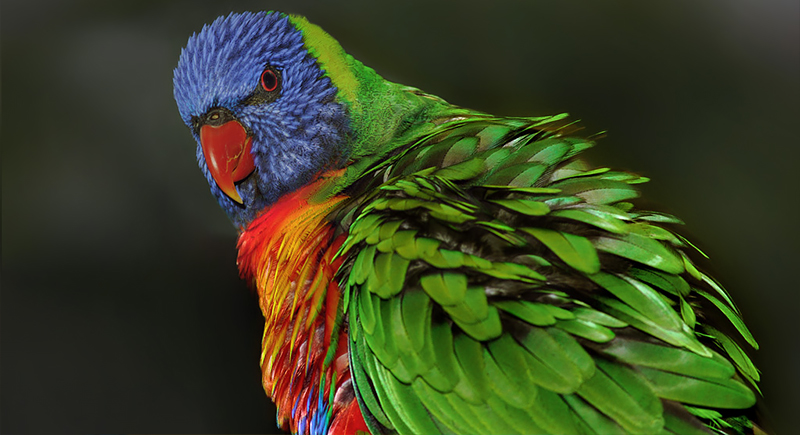
Credit: flickr
Feather ruffling is used by parrots to preen, stay clean, and regulate body temperature. This behavior also indicates that the parrot is comfortable and relaxed. Regular preening and feather maintenance are crucial for their health. You should observe your parrot’s behavior to ensure their well-being and comfort.
Foot Tapping or Toe-Tapping
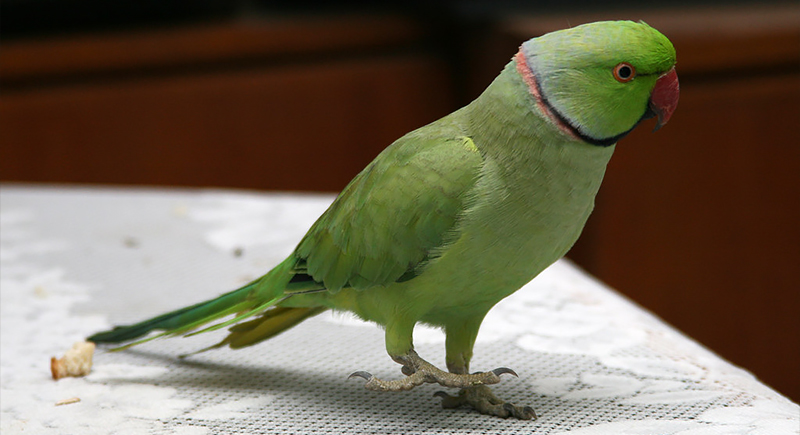
Credit: flickr
Foot tapping or toe-tapping is a sign that your feathery friend is uncomfortable, irritated, or is having a medical episode. This could be associated with dietary imbalances or environmental factors. Constantly monitor this behavior and consult a vet if it persists. This will ensure your parrot’s health and comfort.